| Availability: | |
|---|---|
| Quantity: | |
| Applicable Industries | Hotels, Garment Shops, Building Material Shops, Machinery Repair Shops, Manufacturing Plant, Food & Beverage Factory, Farms, Restaurant, Home Use, Retail, Food Shop, Printing Shops, Construction works , Energy & Mining, Food & Beverage Shops, Other, Advertising Company |
| Power | Optional |
| Warranty | 1 Year |
| Width or Diameter | Size customization |
| Showroom Location | Canada, United States, Italy, Pakistan, India, Mexico, Thailand, Argentina, Colombia, Malaysia |
| Condition | New |
| Structure | Conveyor belt |
| Place of Origin | shenzhen.China |
| Machinery Test Report | Provided |
| Video outgoing-inspection | Provided |
| Marketing Type | New product 2024 |
| Warranty of core components | 1 Year |
| Core Components | Pin, Locker, Belt |
| Weight (KG) | 1 kg |
| Material | Plastic |
| Material Feature | Stable |
| Brand Name | CSTRANS |
| Voltage | 110V 220V 240V |
| Dimension(L*W*H) | Size customization |
| Material | PP.PE.PA,POM |
| Structure | Belt conveyor |
| Brand Name: | UniBelt |
| Pitch | customized |
| color | white. gray. nature. |
| Temperature | POM:-34℃ to 84℃ PP:+1℃ to 98℃ |
| Packaging Details | Packaging Details:Carton or wooden |
| Supply Ability | 1696 Meter/Meters per Month |
| Quantity (meters) | > 708 |
| Lead time (days) | 10 |
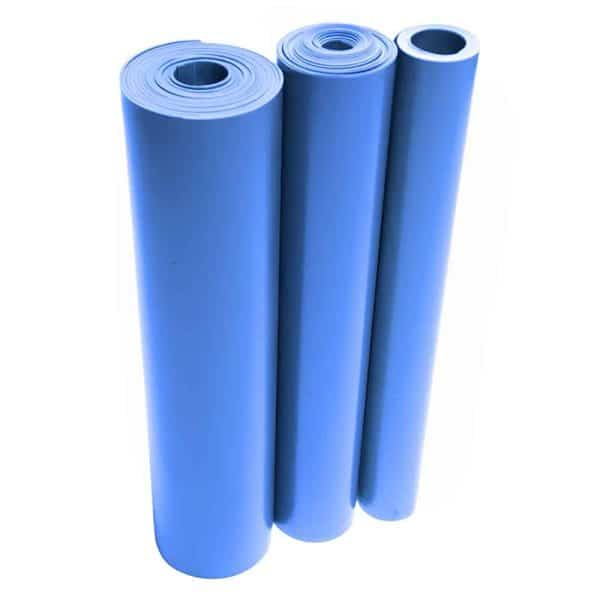
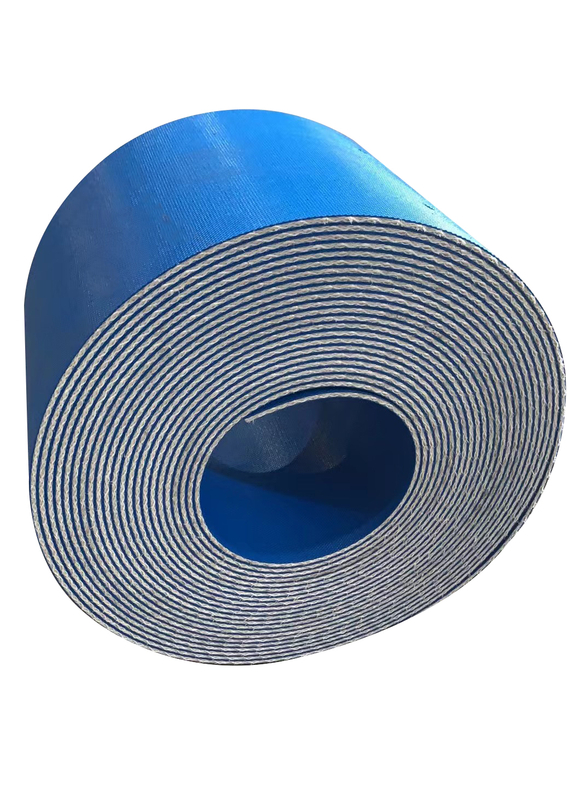
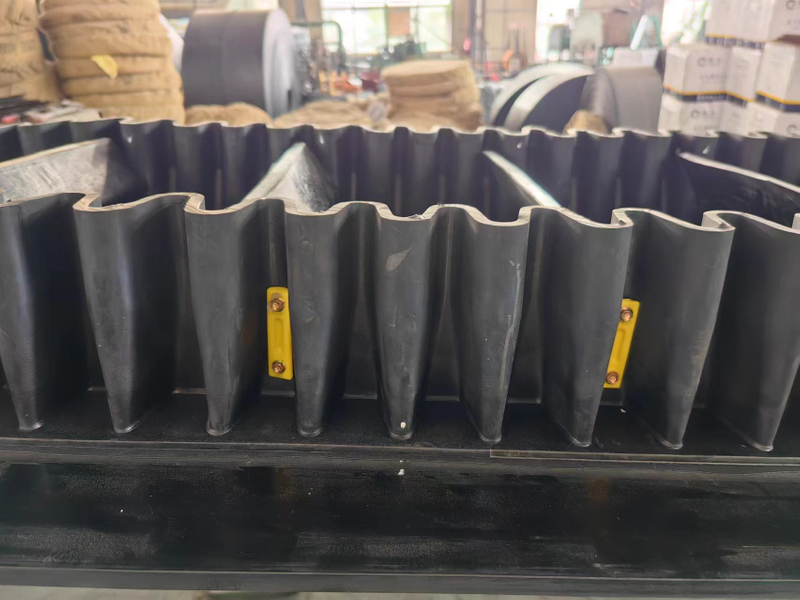
1.How do you control the speed of a scale conveyor belt?
We pay attention to the transformation of intellectual property protection and innovation achievements. Your OEM or ODM order design we have a complete confidentiality system.
The speed of a conveyor belt can be controlled in a few different ways. One common method is to use a variable frequency drive (VFD) which allows for precise control of the motor's speed. Another approach is to use a gearbox with different gear ratios to adjust the speed. Additionally, mechanical speed controllers such as pulleys and belts can also be used. Another way to control the speed is through the design of the machine, such as the diameter of the driving pulley or the length of the conveyor belt. No matter what method is used, it is important to regularly check and calibrate the speed in order to ensure efficient and safe operation of the conveyor belt.
2.Can scale conveyor belt be used for heavy-duty applications?
We maintain a stable growth through reasonable capital operations, focus on industry development trends and cutting -edge technologies, and focus on product quality and safety performance.
Yes, conveyor belts can be used for heavy-duty applications. In fact, there are specific types of conveyor belts designed specifically for heavy-duty use, such as steel cord belts and heavy-duty rubber belts. These belts are made with stronger materials and are able to withstand heavier loads and harsher environments. They are commonly used in industries such as mining, construction, and manufacturing, where heavy materials need to be transported over long distances.
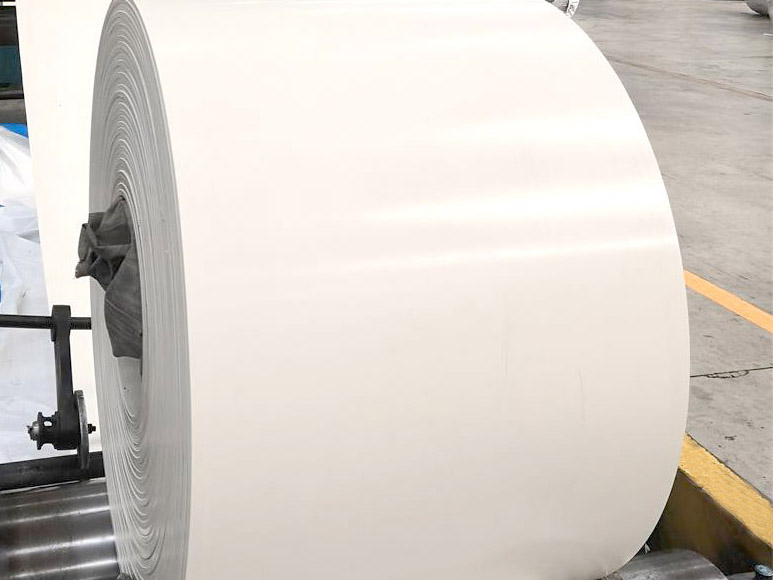
3.What are the safety features of a scale conveyor belt?
We have a wide range of scale conveyor belt customer groups and establishes long -term cooperative relationships with partners. The countries we provide services include .
There are various safety features that are implemented in a conveyor belt to ensure safe operation. These include emergency stop buttons, safety switches, guardrails, and warning signs. These features are designed to protect workers from hazards such as getting caught in the belt or being struck by falling objects. Additionally, sensors and alarms are often used to detect any malfunctions or abnormality in the conveyor system, allowing for quick intervention and resolution of any potential hazards. Regular maintenance and proper training for workers are also crucial in ensuring the safety of a conveyor belt.
4.What safety precautions should be followed while working with scale conveyor belt?
scale conveyor belt is not a product only, but also can help you comes to money-making.
When working with conveyor belts, it is important to follow certain safety precautions to ensure the safety of yourself and those around you. First and foremost, always wear the proper personal protective equipment, such as gloves and safety glasses, to protect against potential hazards. It is also important to regularly inspect the conveyor belt for any signs of wear and tear, and address any issues immediately. When operating the conveyor belt, make sure to follow proper lockout/tagout procedures to prevent accidental start up. When loading or unloading materials onto the conveyor belt, be aware of your surroundings and stand clear from any moving parts. Additionally, be cautious of any potential pinch points and keep hands and clothing clear from them. Lastly, always be familiar with the emergency shut-off procedures and have an emergency plan in place in case of any accidents. By following these safety precautions, you can ensure a safe working environment when working with conveyor belts.

5.How do you choose the appropriate speed for a scale conveyor belt?
Choosing the appropriate speed for a conveyor belt is crucial for optimizing the efficiency and productivity of a production line. The speed of the conveyor belt is determined by various factors such as the type and weight of the materials being transported, the distance between the loading and unloading points, and the desired output rate. It is important to carefully consider these factors in order to select the most suitable speed for the specific application. Furthermore, regular maintenance and monitoring of the belt speed can ensure the smooth operation of the conveyor system and prevent any potential hazards. By understanding and adjusting the speed accordingly, businesses can enhance their overall operations and ultimately achieve greater success.
6.Can scale conveyor belt be used in cleanroom environments?
Yes, conveyor belts can be used in cleanroom environments. However, special considerations must be taken to ensure that the conveyor belt does not introduce contaminants into the cleanroom. This may include using materials that are non-shedding and easy to clean, as well as implementing regular maintenance and cleaning procedures. Additionally, the conveyor belt should be designed to minimize particle generation and have a smooth, continuous surface to prevent the accumulation of particles.
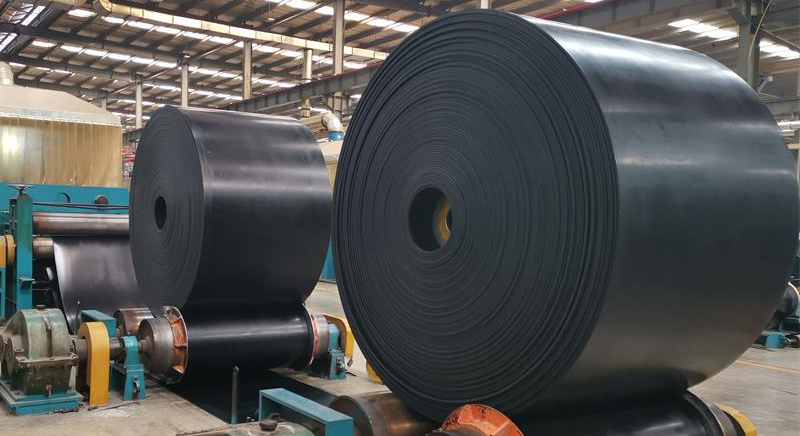
7.How do you calculate the required horsepower for a scale conveyor belt?
To calculate the required horsepower for a conveyor belt, the following factors need to be taken into account:
1. Belt speed: The speed at which the belt moves.
2. Belt width: The width of the conveyor belt.
3. Material density: The weight of the material being conveyed in pounds per cubic foot.
4. Conveyor length: The length of the conveyor belt.
5. Incline angle: The angle at which the conveyor is inclined.
6. Friction coefficient: The coefficient of friction between the belt and the material being conveyed.
Using these factors, the required horsepower can be calculated using the following formula:
HP = (W x V)/33,000 x (1 ± (K x T))/33000 Where HP = Horsepower, W = Conveyor Width (inches), V = Belt speed (feet per minute), K = Friction coefficient, T = Material thickness (inches). It is important to note that this formula provides an estimate and may vary depending on the specific conditions and characteristics of the conveyor. Regular maintenance and proper selection of components can also impact the required horsepower for a conveyor belt.
8.How do scale conveyor belt improve productivity in a manufacturing facility?
Conveyor belts play a crucial role in improving productivity in a manufacturing facility. They are automated systems that are designed to efficiently transport materials and products throughout the production process. By eliminating the need for manual handling and transportation, they reduce the risk of human error and increase the speed and accuracy of material movement. This not only saves time and labor costs, but also allows for a continuous flow of production, ultimately leading to higher output and improved efficiency. Additionally, conveyor belts also contribute to a safer work environment by reducing the risk of injuries due to heavy lifting or repetitive motions.

9.How do scale conveyor belt contribute to the efficiency of a production line?
Being one of the top scale conveyor belt manufacturers in China, We attach great importance to this detail.
Conveyor belts play a crucial role in the efficiency of a production line. By continuously moving materials or products from one process to another, they help to streamline the production process and eliminate the need for manual handling. This reduces the risk of errors, increases productivity, and ultimately saves time and money. In addition, conveyor belts can be designed to accommodate different types of materials and products, allowing for a more diverse and flexible production line. They also have the ability to transport materials at a consistent speed, ensuring a smooth and efficient flow of production.
10.How fast do scale conveyor belt move?
I have a comprehensive after -sales service system, which can pay attention to market trends in time and adjust our strategy in a timely manner.
The speed of conveyor belts can vary depending on the type of belt, the material being transported, and the specific application. Generally, conveyor belts can move anywhere from 1 to 300 feet per minute. Some specialized conveyor belts can reach speeds of up to 500 feet per minute. The speed of the conveyor belt can also be adjusted to meet the specific needs of the application.

11.What is the role of bearings in a scale conveyor belt system?
We have broad development space in domestic and foreign markets. scale conveyor belt have great advantages in terms of price, quality, and delivery date.
Bearings play a crucial role in a conveyor belt system, helping to support and guide the movement of the belt as it transports goods and materials. They are responsible for reducing friction and wear, ensuring smooth and efficient operation of the conveyor belt. Without bearings, the belt would have a higher resistance to movement, resulting in increased energy consumption and potential damage to the belt itself. In addition, bearings are also essential for maintaining proper alignment and tension of the belt, allowing for precise and reliable movement of materials. In summary, bearings are an essential component of a conveyor belt system, providing stability, efficiency, and longevity to this important industrial equipment.
12.How do you troubleshoot issues with scale conveyor belt tracking?
When troubleshooting issues with conveyor belt tracking, there are several steps you should follow. First, visually inspect the belt to check for any visible damage or misalignment. Next, make sure the tracking idlers are properly adjusted and any worn or damaged parts are replaced. Then, check the tension and alignment of the belt to ensure it is centered on the pulleys. Additionally, make sure the conveyor is on a level surface and that there are no obstructions or debris interfering with the tracking. Finally, test the belt by running it at a low speed and making any necessary adjustments until the tracking issue is resolved. Regular maintenance and monitoring can also help prevent future tracking issues.
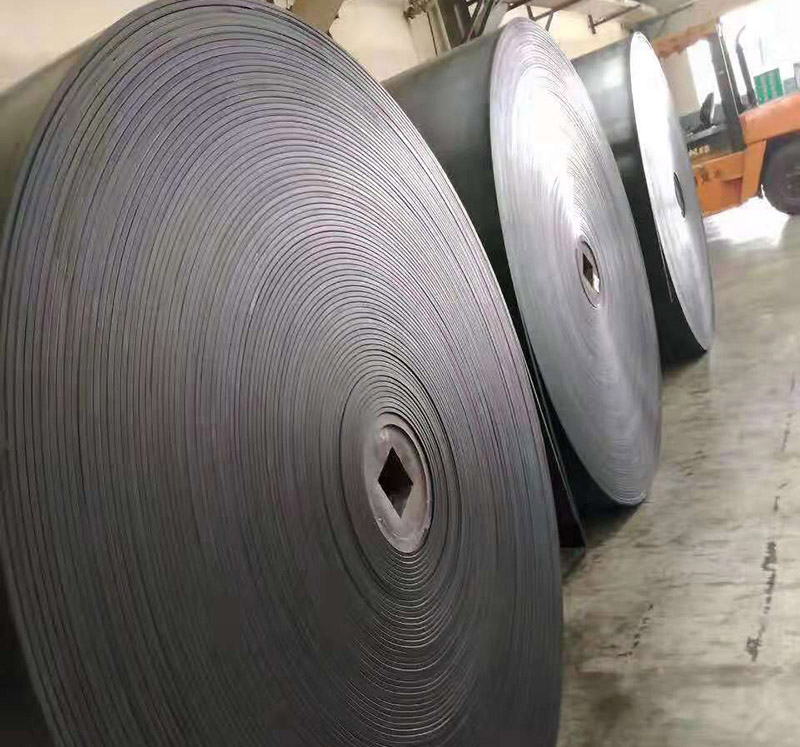
13.Can scale conveyor belt be customized for specific needs?
We adhere to the principle of integrity and transparency, and establish long -term relationships with partners, and we attach great importance to this detail.
Yes, conveyor belts can be customized for specific needs. This can include the size, material, and design of the belt to fit the specific application or industry. Customization can also include features such as specialized coatings, cleats, and tracking systems to meet specific requirements. Conveyor belt manufacturers often offer customization services to meet the unique needs of their customers.
14.How do scale conveyor belt contribute to cost savings in material handling?
Conveyor belts are an essential component in material handling, allowing for the efficient and seamless transfer of goods across different areas. They are particularly valuable in reducing costs, thanks to their ability to automate the handling process and eliminate the need for manual labor. With conveyor belts, businesses can experience increased productivity and reduced labor costs, leading to overall cost savings. Moreover, these belts are designed for durability and longevity, reducing maintenance and replacement costs in the long run. Thus, incorporating conveyor belts into material handling systems can greatly contribute to cost savings for businesses.

15.What are the cost savings associated with using scale conveyor belt?
We have established a good reputation and reliable partnerships within the scale conveyor belt industry.
Using conveyor belts in industrial environments can result in significant cost savings. These savings are achieved through increased efficiency, improved safety, and reduced labor costs. Conveyor belts eliminate the need for manual transportation of goods, saving time and reducing the risk of injury to workers. Additionally, they allow for faster and smoother movement of materials, reducing production downtime and increasing throughput. The use of conveyor belts also reduces the need for forklifts and other heavy machinery, saving on maintenance and operational costs.
Tag:three v belt,j35 timing belt,conveyor belt luggage
| Applicable Industries | Hotels, Garment Shops, Building Material Shops, Machinery Repair Shops, Manufacturing Plant, Food & Beverage Factory, Farms, Restaurant, Home Use, Retail, Food Shop, Printing Shops, Construction works , Energy & Mining, Food & Beverage Shops, Other, Advertising Company |
| Power | Optional |
| Warranty | 1 Year |
| Width or Diameter | Size customization |
| Showroom Location | Canada, United States, Italy, Pakistan, India, Mexico, Thailand, Argentina, Colombia, Malaysia |
| Condition | New |
| Structure | Conveyor belt |
| Place of Origin | shenzhen.China |
| Machinery Test Report | Provided |
| Video outgoing-inspection | Provided |
| Marketing Type | New product 2024 |
| Warranty of core components | 1 Year |
| Core Components | Pin, Locker, Belt |
| Weight (KG) | 1 kg |
| Material | Plastic |
| Material Feature | Stable |
| Brand Name | CSTRANS |
| Voltage | 110V 220V 240V |
| Dimension(L*W*H) | Size customization |
| Material | PP.PE.PA,POM |
| Structure | Belt conveyor |
| Brand Name: | UniBelt |
| Pitch | customized |
| color | white. gray. nature. |
| Temperature | POM:-34℃ to 84℃ PP:+1℃ to 98℃ |
| Packaging Details | Packaging Details:Carton or wooden |
| Supply Ability | 1696 Meter/Meters per Month |
| Quantity (meters) | > 708 |
| Lead time (days) | 10 |



1.How do you control the speed of a scale conveyor belt?
We pay attention to the transformation of intellectual property protection and innovation achievements. Your OEM or ODM order design we have a complete confidentiality system.
The speed of a conveyor belt can be controlled in a few different ways. One common method is to use a variable frequency drive (VFD) which allows for precise control of the motor's speed. Another approach is to use a gearbox with different gear ratios to adjust the speed. Additionally, mechanical speed controllers such as pulleys and belts can also be used. Another way to control the speed is through the design of the machine, such as the diameter of the driving pulley or the length of the conveyor belt. No matter what method is used, it is important to regularly check and calibrate the speed in order to ensure efficient and safe operation of the conveyor belt.
2.Can scale conveyor belt be used for heavy-duty applications?
We maintain a stable growth through reasonable capital operations, focus on industry development trends and cutting -edge technologies, and focus on product quality and safety performance.
Yes, conveyor belts can be used for heavy-duty applications. In fact, there are specific types of conveyor belts designed specifically for heavy-duty use, such as steel cord belts and heavy-duty rubber belts. These belts are made with stronger materials and are able to withstand heavier loads and harsher environments. They are commonly used in industries such as mining, construction, and manufacturing, where heavy materials need to be transported over long distances.

3.What are the safety features of a scale conveyor belt?
We have a wide range of scale conveyor belt customer groups and establishes long -term cooperative relationships with partners. The countries we provide services include .
There are various safety features that are implemented in a conveyor belt to ensure safe operation. These include emergency stop buttons, safety switches, guardrails, and warning signs. These features are designed to protect workers from hazards such as getting caught in the belt or being struck by falling objects. Additionally, sensors and alarms are often used to detect any malfunctions or abnormality in the conveyor system, allowing for quick intervention and resolution of any potential hazards. Regular maintenance and proper training for workers are also crucial in ensuring the safety of a conveyor belt.
4.What safety precautions should be followed while working with scale conveyor belt?
scale conveyor belt is not a product only, but also can help you comes to money-making.
When working with conveyor belts, it is important to follow certain safety precautions to ensure the safety of yourself and those around you. First and foremost, always wear the proper personal protective equipment, such as gloves and safety glasses, to protect against potential hazards. It is also important to regularly inspect the conveyor belt for any signs of wear and tear, and address any issues immediately. When operating the conveyor belt, make sure to follow proper lockout/tagout procedures to prevent accidental start up. When loading or unloading materials onto the conveyor belt, be aware of your surroundings and stand clear from any moving parts. Additionally, be cautious of any potential pinch points and keep hands and clothing clear from them. Lastly, always be familiar with the emergency shut-off procedures and have an emergency plan in place in case of any accidents. By following these safety precautions, you can ensure a safe working environment when working with conveyor belts.

5.How do you choose the appropriate speed for a scale conveyor belt?
Choosing the appropriate speed for a conveyor belt is crucial for optimizing the efficiency and productivity of a production line. The speed of the conveyor belt is determined by various factors such as the type and weight of the materials being transported, the distance between the loading and unloading points, and the desired output rate. It is important to carefully consider these factors in order to select the most suitable speed for the specific application. Furthermore, regular maintenance and monitoring of the belt speed can ensure the smooth operation of the conveyor system and prevent any potential hazards. By understanding and adjusting the speed accordingly, businesses can enhance their overall operations and ultimately achieve greater success.
6.Can scale conveyor belt be used in cleanroom environments?
Yes, conveyor belts can be used in cleanroom environments. However, special considerations must be taken to ensure that the conveyor belt does not introduce contaminants into the cleanroom. This may include using materials that are non-shedding and easy to clean, as well as implementing regular maintenance and cleaning procedures. Additionally, the conveyor belt should be designed to minimize particle generation and have a smooth, continuous surface to prevent the accumulation of particles.

7.How do you calculate the required horsepower for a scale conveyor belt?
To calculate the required horsepower for a conveyor belt, the following factors need to be taken into account:
1. Belt speed: The speed at which the belt moves.
2. Belt width: The width of the conveyor belt.
3. Material density: The weight of the material being conveyed in pounds per cubic foot.
4. Conveyor length: The length of the conveyor belt.
5. Incline angle: The angle at which the conveyor is inclined.
6. Friction coefficient: The coefficient of friction between the belt and the material being conveyed.
Using these factors, the required horsepower can be calculated using the following formula:
HP = (W x V)/33,000 x (1 ± (K x T))/33000 Where HP = Horsepower, W = Conveyor Width (inches), V = Belt speed (feet per minute), K = Friction coefficient, T = Material thickness (inches). It is important to note that this formula provides an estimate and may vary depending on the specific conditions and characteristics of the conveyor. Regular maintenance and proper selection of components can also impact the required horsepower for a conveyor belt.
8.How do scale conveyor belt improve productivity in a manufacturing facility?
Conveyor belts play a crucial role in improving productivity in a manufacturing facility. They are automated systems that are designed to efficiently transport materials and products throughout the production process. By eliminating the need for manual handling and transportation, they reduce the risk of human error and increase the speed and accuracy of material movement. This not only saves time and labor costs, but also allows for a continuous flow of production, ultimately leading to higher output and improved efficiency. Additionally, conveyor belts also contribute to a safer work environment by reducing the risk of injuries due to heavy lifting or repetitive motions.

9.How do scale conveyor belt contribute to the efficiency of a production line?
Being one of the top scale conveyor belt manufacturers in China, We attach great importance to this detail.
Conveyor belts play a crucial role in the efficiency of a production line. By continuously moving materials or products from one process to another, they help to streamline the production process and eliminate the need for manual handling. This reduces the risk of errors, increases productivity, and ultimately saves time and money. In addition, conveyor belts can be designed to accommodate different types of materials and products, allowing for a more diverse and flexible production line. They also have the ability to transport materials at a consistent speed, ensuring a smooth and efficient flow of production.
10.How fast do scale conveyor belt move?
I have a comprehensive after -sales service system, which can pay attention to market trends in time and adjust our strategy in a timely manner.
The speed of conveyor belts can vary depending on the type of belt, the material being transported, and the specific application. Generally, conveyor belts can move anywhere from 1 to 300 feet per minute. Some specialized conveyor belts can reach speeds of up to 500 feet per minute. The speed of the conveyor belt can also be adjusted to meet the specific needs of the application.

11.What is the role of bearings in a scale conveyor belt system?
We have broad development space in domestic and foreign markets. scale conveyor belt have great advantages in terms of price, quality, and delivery date.
Bearings play a crucial role in a conveyor belt system, helping to support and guide the movement of the belt as it transports goods and materials. They are responsible for reducing friction and wear, ensuring smooth and efficient operation of the conveyor belt. Without bearings, the belt would have a higher resistance to movement, resulting in increased energy consumption and potential damage to the belt itself. In addition, bearings are also essential for maintaining proper alignment and tension of the belt, allowing for precise and reliable movement of materials. In summary, bearings are an essential component of a conveyor belt system, providing stability, efficiency, and longevity to this important industrial equipment.
12.How do you troubleshoot issues with scale conveyor belt tracking?
When troubleshooting issues with conveyor belt tracking, there are several steps you should follow. First, visually inspect the belt to check for any visible damage or misalignment. Next, make sure the tracking idlers are properly adjusted and any worn or damaged parts are replaced. Then, check the tension and alignment of the belt to ensure it is centered on the pulleys. Additionally, make sure the conveyor is on a level surface and that there are no obstructions or debris interfering with the tracking. Finally, test the belt by running it at a low speed and making any necessary adjustments until the tracking issue is resolved. Regular maintenance and monitoring can also help prevent future tracking issues.

13.Can scale conveyor belt be customized for specific needs?
We adhere to the principle of integrity and transparency, and establish long -term relationships with partners, and we attach great importance to this detail.
Yes, conveyor belts can be customized for specific needs. This can include the size, material, and design of the belt to fit the specific application or industry. Customization can also include features such as specialized coatings, cleats, and tracking systems to meet specific requirements. Conveyor belt manufacturers often offer customization services to meet the unique needs of their customers.
14.How do scale conveyor belt contribute to cost savings in material handling?
Conveyor belts are an essential component in material handling, allowing for the efficient and seamless transfer of goods across different areas. They are particularly valuable in reducing costs, thanks to their ability to automate the handling process and eliminate the need for manual labor. With conveyor belts, businesses can experience increased productivity and reduced labor costs, leading to overall cost savings. Moreover, these belts are designed for durability and longevity, reducing maintenance and replacement costs in the long run. Thus, incorporating conveyor belts into material handling systems can greatly contribute to cost savings for businesses.

15.What are the cost savings associated with using scale conveyor belt?
We have established a good reputation and reliable partnerships within the scale conveyor belt industry.
Using conveyor belts in industrial environments can result in significant cost savings. These savings are achieved through increased efficiency, improved safety, and reduced labor costs. Conveyor belts eliminate the need for manual transportation of goods, saving time and reducing the risk of injury to workers. Additionally, they allow for faster and smoother movement of materials, reducing production downtime and increasing throughput. The use of conveyor belts also reduces the need for forklifts and other heavy machinery, saving on maintenance and operational costs.
Tag:three v belt,j35 timing belt,conveyor belt luggage

